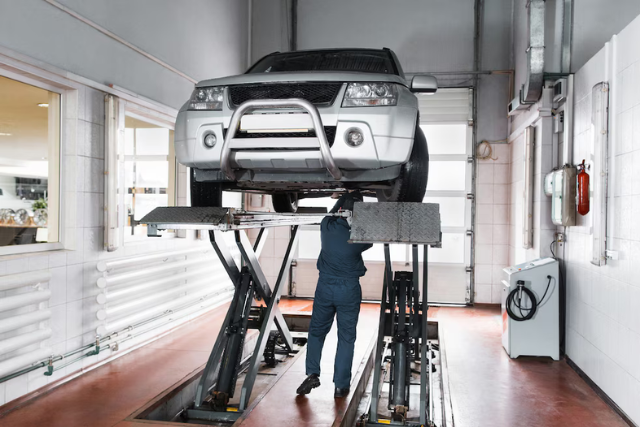Car Service Elevator

Car Service Elevator Manufacturers
A Car Service Elevator, also known as a Car Lift or Automobile Elevator, is a specialized vertical transportation system designed to move vehicles between different levels of a building. These elevators are commonly used in multi-level parking structures, automobile showrooms, service centers, and residential buildings with limited parking space. By utilizing vertical space, car elevators optimize parking efficiency and provide a seamless solution for vehicle movement within a facility.
Features and Specifications:
Load Capacity:
Typically ranges from 2,500 kg to 5,000 kg, accommodating various vehicle sizes and weights.
Platform Dimensions:
Common dimensions include widths from 2.3 meters to 2.8 meters and lengths from 5.5 meters to 6.0 meters, ensuring compatibility with most vehicles.
Speed:
Operating speeds generally vary between 0.5 meters per second to 1.5 meters per second, depending on the system design and building requirements.
Drive Systems:
Hydraulic Drive:
Ideal for low to mid-rise buildings with travel heights up to 15 meters.
Offers smooth and quiet operation.
Requires a machine room for housing the hydraulic components.
Traction Drive:
Suitable for mid to high-rise buildings with greater travel heights.
Utilizes counterweights and offers higher energy efficiency.
Typically requires a dedicated machine room above the elevator shaft.
Door Configurations:
Opposite Opening Doors:
Facilitates drive-through operation, allowing vehicles to enter from one side and exit from the opposite side without reversing.
Adjacent Opening Doors:
Suitable for specific building layouts where opposite openings are not feasible.
Safety Features:
Overload Protection:
Prevents operation if the vehicle’s weight exceeds the elevator’s capacity.
Emergency Stop Buttons:
Allows immediate halting of the elevator in case of an emergency.
Door Interlocks:
Ensures the elevator operates only when doors are securely closed.
Backup Power Supply:
Enables elevator operation during power outages, ensuring vehicles are not stranded.
Fire Safety Features:
Includes fire-resistant materials and fire-rated doors to enhance safety during fire incidents.
Installation Requirements:
Pit Depth:
Typically around 1.8 meters to accommodate the elevator’s undercarriage and ensure level entry and exit.
Overhead Clearance:
A minimum of 4.2 meters is often required, especially for machine room-less designs.
Customization Options:
Cabin interiors can be tailored with various finishes, lighting, and control interfaces to align with the building’s aesthetics and user preferences.
Additional features like turntables can be integrated to facilitate vehicle maneuvering within confined spaces.
Benefits:
Space Optimization:
Eliminates the need for lengthy ramps, thereby maximizing usable floor space within the building.
Enhanced Security:
Restricts vehicle access to authorized personnel, reducing the risk of theft or vandalism.
Convenience:
Provides direct access to specific building levels, streamlining the parking and retrieval process.
Increased Property Value:
Incorporating modern car elevator systems can enhance the property’s appeal and market value.
Considerations:
Cost:
The investment varies based on load capacity, travel height, customization, and installation complexities.
Maintenance:
Regular servicing is essential to ensure safety and prolong the system’s lifespan.
Compliance:
Adherence to local building codes and safety regulations is mandatory during design and installation.
